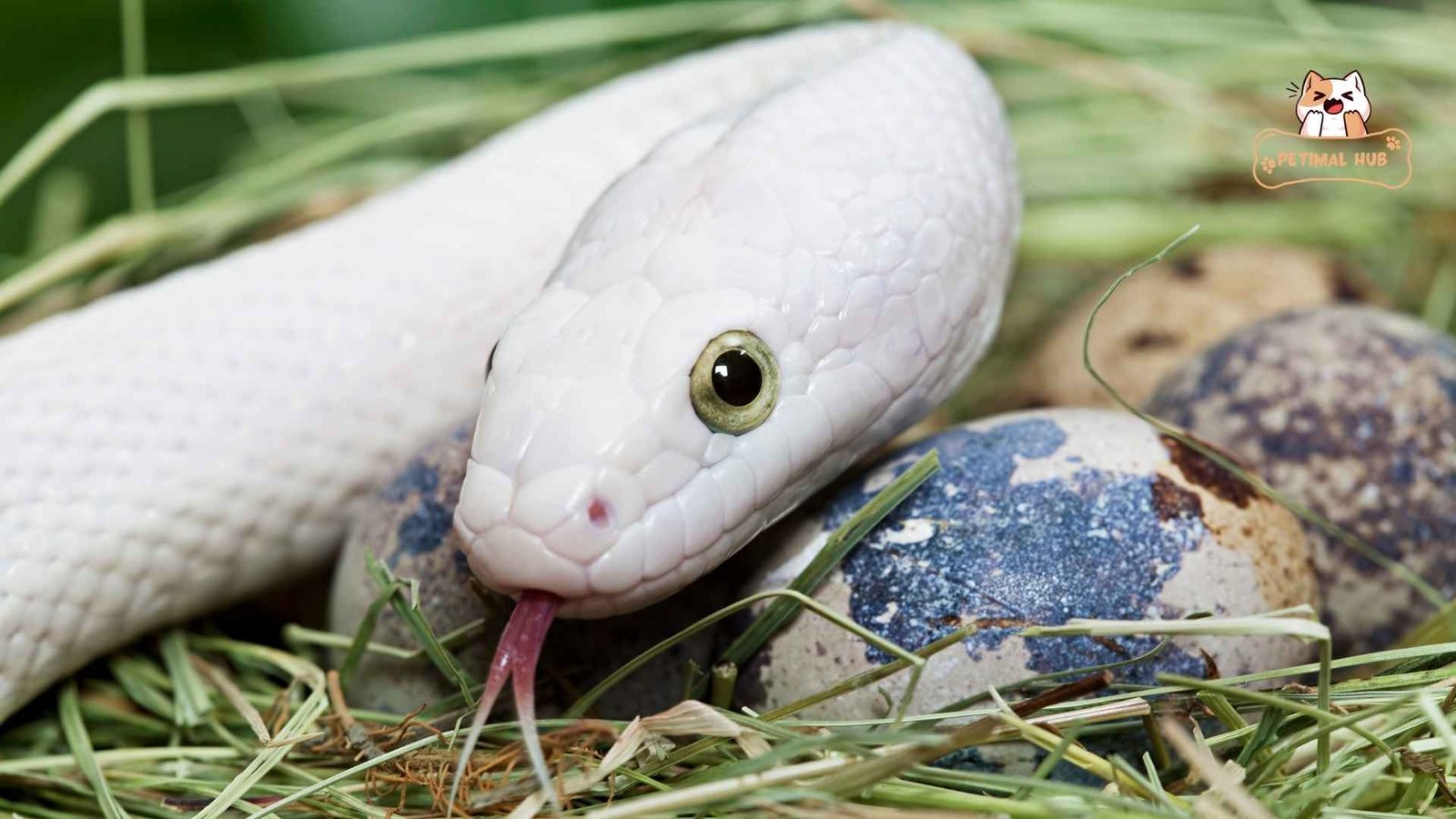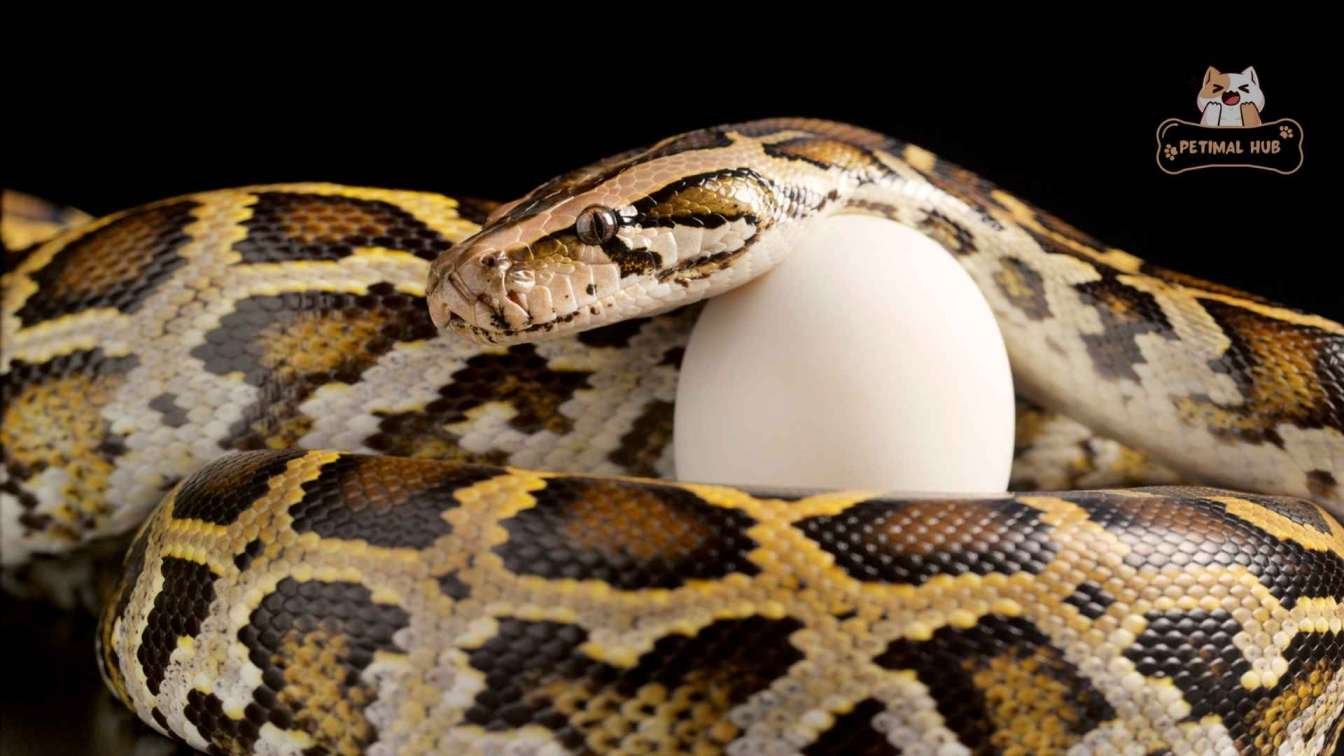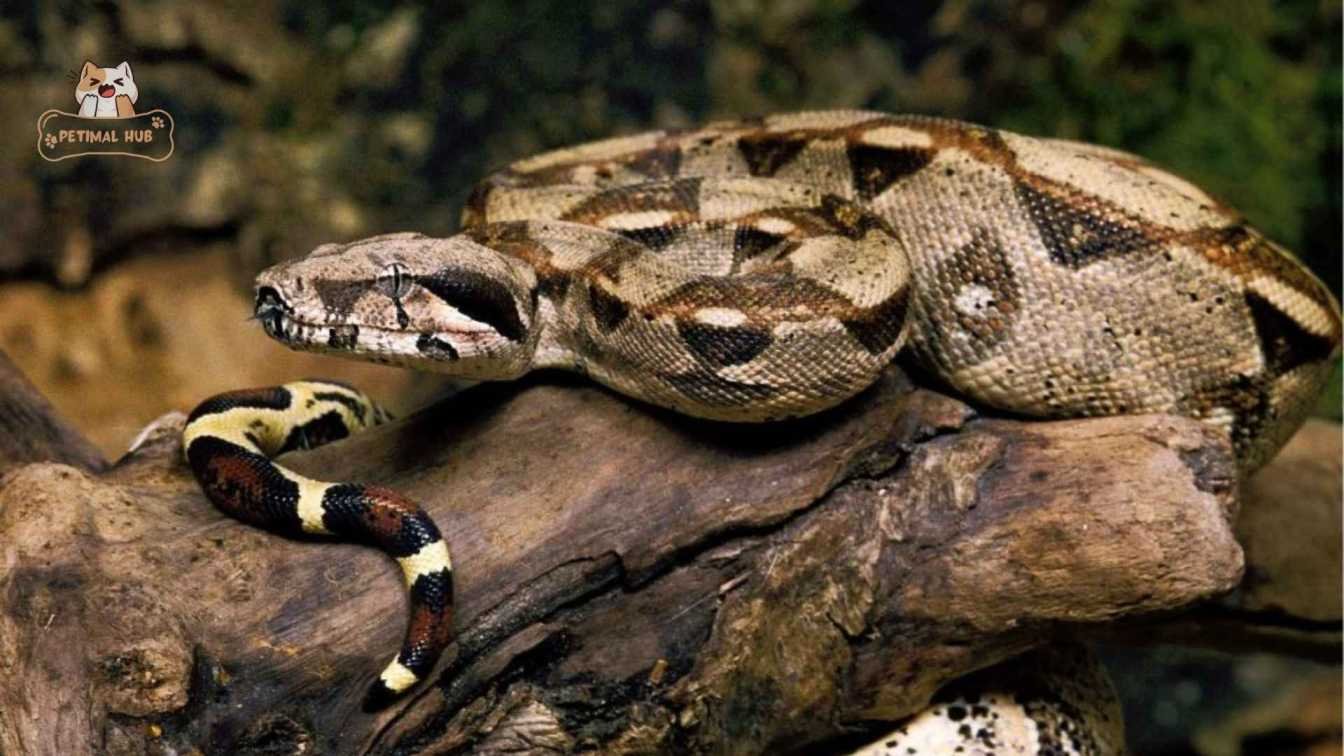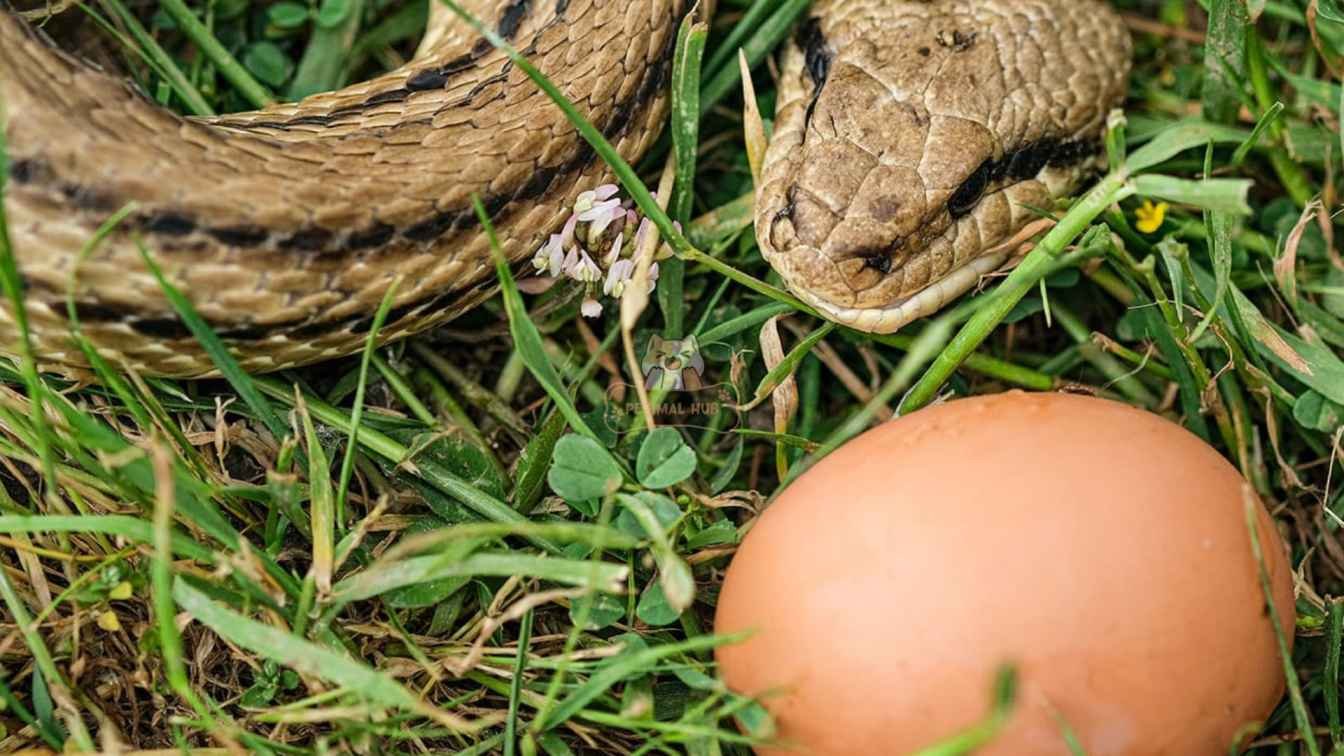
- Blog, Snake
What Do Snake Eggs Look Like?
- November 6, 2024

Snake eggs, these mysterious creations of nature, pique our curiosity with their enigmatic charm. In a world where reptiles lay eggs, the question inevitably arises: “What Do Snake Eggs Look Like?” As we explore this intriguing aspect of snake biology, we’ll unveil the secrets behind these remarkable eggs, unraveling their appearance, texture, and the factors that make them unique. Join us on this journey to demystify snake eggs.
Table of Contents
ToggleQuick Answer: Understanding what snake eggs look like begins with recognizing the fascinating diversity among snakes. With around 3,600 different species, about 70% of them lay eggs, known as oviparity. Typically, snake eggs are oblong or elliptical, akin to thick grains of rice, and have a soft, leathery texture. While most are white or off-white, exceptions exist, such as eggs resembling ginger roots in certain African and Asian snake species. Identifying these eggs is an engaging endeavor, driven by their unique traits.
The World of Snake Diversity

To understand snake eggs, we need to explore the diversity of snakes. There are about 3,600 snake species worldwide, living in different places and having unique traits, especially in how they reproduce.
Oviparous Snakes - Laying the Foundation

The majority of snake species, approximately 70%, are oviparous, which means they lay eggs. These eggs vary significantly in size, shape, and appearance, depending on the snake species. While we’ll delve into the specifics of snake eggs shortly, it’s important to appreciate the role of oviparity in snake biology.
Some of the most iconic snake families, like cobras and adders, are oviparous. These snakes exhibit remarkable adaptations related to their egg-laying behavior. From selecting ideal nesting sites to safeguarding their eggs, oviparous snakes employ various strategies to ensure the survival of their offspring.
Ovoviviparous Snakes - A Unique Approach

In contrast to oviparous snakes, ovoviviparous species take a distinctive approach to reproduction. These snakes incubate their eggs internally, within the mother’s body. As the embryos develop, they receive nutrients from a yolk sac. When the gestation period concludes, the mother gives birth to live, fully-formed young snakes, and the eggshells remain inside her.
Also, Read More: How Long Can a Bee Live Without Food?
Rattlesnakes are prominent examples of ovoviviparous snakes. This way of reproducing has benefits. It protects babies from dangers and allows them to be born more developed than those hatching from eggs.
Viviparous Snakes - An Exceptional Rarity

Viviparous snakes are the exception among the snake kingdom. In this reproductive strategy, snakes do not utilize eggs at any stage of development. Instead, the embryo develops within the mother’s body, relying on a placenta for nourishment. When it’s time for birth, viviparous snakes bring forth live offspring, bypassing the egg stage entirely.
Species like boa constrictors and anacondas showcase viviparity. This unique approach, while rare among snakes, offers certain advantages in terms of offspring survival.
Geographical Variations - From North to South America

Snake diversity isn’t limited to their reproductive strategies alone. It extends to their geographic distribution. Snakes inhabit nearly every corner of the world, with distinct species found on different continents.
In North America, there are many types of snakes, each with their own place in nature and way of having babies. The same is true for South America, where snakes have adapted to different environments on the continent.
Also, Read More: What Colors Do Bees Hate?
Understanding this rich tapestry of snake diversity is crucial to appreciating the nuances of snake eggs. With this foundation in place, we can now explore the intricacies of snake egg characteristics and the art of identifying them in the wild.
Characteristics of Snake Eggs

Snake eggs have interesting features, designed for the needs of each snake species and their environment. Here, we will explore these special traits that set snake eggs apart in the world of reptile reproduction.
- Texture and Hardness: Snake eggs have a soft, leathery texture that offers protection and flexibility but requires careful handling to avoid damage.
- Adaptations to Habitat: Snake eggs adapt to their environment, with softer shells in wet habitats and tougher ones in dry regions, ensuring survival in specific surroundings.
Color and Texture Variations

When it comes to identifying snake eggs, paying attention to color and texture is crucial. Snake eggs exhibit distinct variations that can help you distinguish them from other types of eggs, such as those laid by birds or reptiles.
Texture
- Snake eggs have a soft, leathery feel with a degree of pliability.
- In contrast, bird eggs have hard, rigid shells.
- This unique texture provides some protection and flexibility for the developing snake embryo.
Coloration
- Snake eggs typically have a coloration that blends with their nesting environment.
- The most common colors are white, off-white, or beige.
- Some variations in color may exist, such as pale yellow or grayish tones, depending on the snake species.
- Vividly colored eggs, like bright blue or green, are usually not snake eggs and may indicate issues with the egg or embryo.
How to Approach and Interact with Snake Eggs in the Wild

Interacting with snake eggs in the wild requires caution and respect for these delicate, natural treasures. Here are some guidelines to follow when you encounter snake eggs:
Clutches of Eggs
A “clutch” is the term used to describe a group of eggs laid by a snake at the same time. Here are some insights into clutches of snake eggs:
- Size of Clutches: The size of snake clutches varies widely among species. Some snakes may lay only a few eggs in a clutch, while others can produce dozens.
- Nesting Behavior: Female snakes carefully choose their nesting sites. These sites are typically warm, protected, and conducive to incubating the eggs.
- Incubation Period: The incubation period for snake eggs depends on factors like temperature and humidity. It can range from several weeks to several months.
- Hatching: Once the incubation period is complete, baby snakes, known as hatchlings, emerge from their eggs.
Safety Considerations When Encountering Snake Eggs in Venomous Snake Habitats
Safety Considerations | Description |
|---|---|
Identification from a Distance | Identify eggs from a safe distance to avoid disturbing the mother snake, reducing stress and potential risks. |
Observe Quietly | Maintain silence and avoid sudden movements to prevent disturbing the nesting area or provoking defensive responses. |
Do Not Touch | Avoid touching or handling snake eggs, as it can harm embryos, damage the delicate eggs, and lead to abandonment by the mother snake. |
Avoid Nesting Sites | Exercise caution near known nesting areas, such as burrows or crevices. Nesting areas may harbor protective mother snakes; approach with care. |
Consult Experts | Seek guidance from wildlife authorities or herpetologists for egg identification. Experts can provide accurate identification and recommendations for safe actions. |
Conclusion
Snake eggs are a testament to the diversity and adaptability of these fascinating reptiles, varying in size, shape, texture, and color based on species and habitat. When encountered in the wild, it’s crucial to maintain a safe distance and avoid disturbing them, ensuring both personal safety and the well-being of the eggs.
By respecting these natural marvels, we deepen our understanding of the natural world and underscore the importance of protecting snake habitats. This not only enriches our appreciation for these remarkable creatures but also supports their survival for generations to come.
Snake eggs are pliable and slightly flexible when touched. Their leathery texture distinguishes them from bird eggs, which are hard-shelled.
Snake eggs typically range from 1 to 2 inches long, depending on the species, with larger snakes laying bigger eggs.
Snake eggs typically range from 1 to 2 inches long, depending on the species, with larger snakes laying bigger eggs.
The number varies by species, but most snakes lay between 6 to 30 eggs in a single clutch.
Yes, by using a technique called “candling,” a light is shined through the egg to check for a developing embryo.





